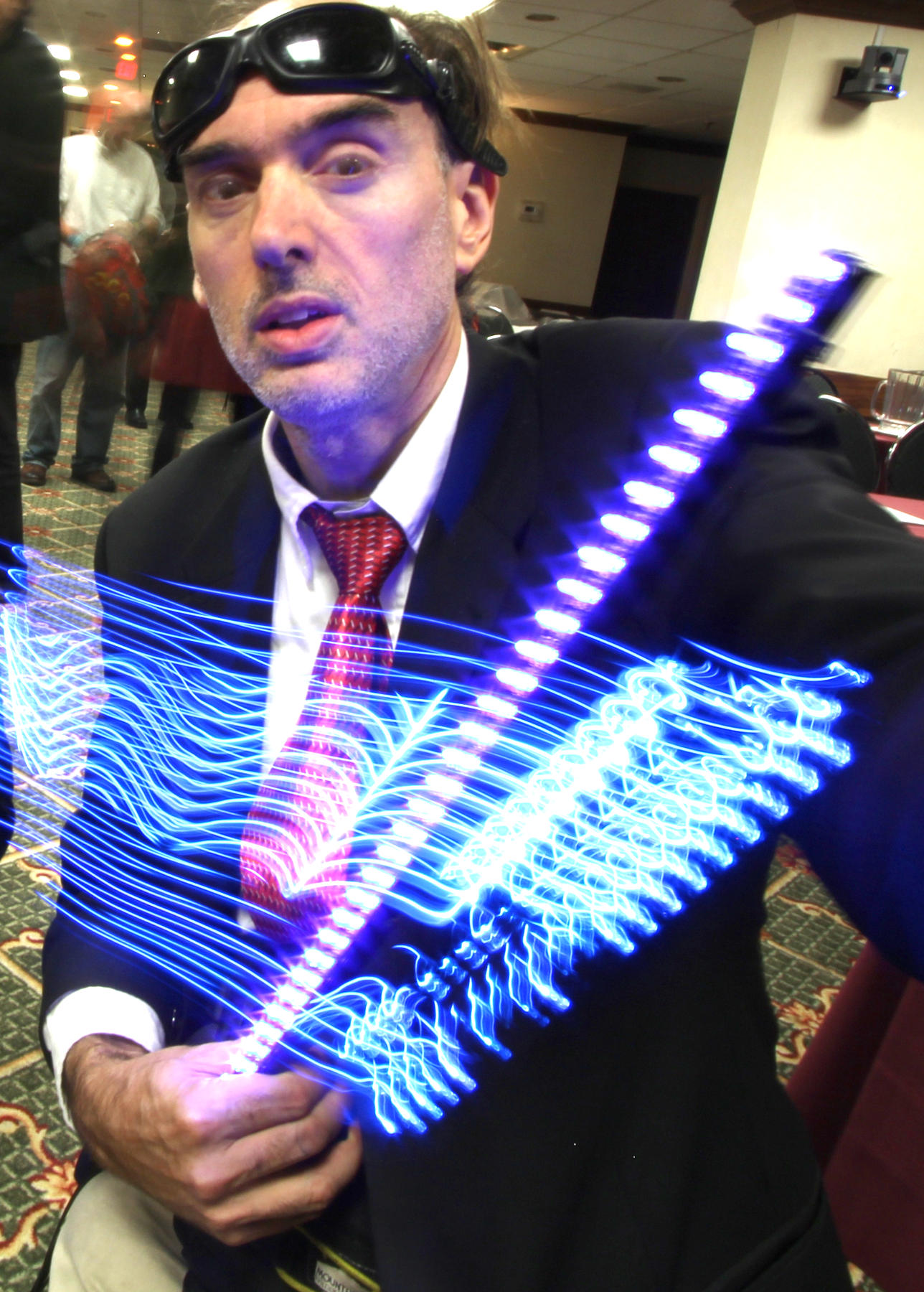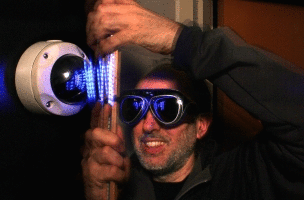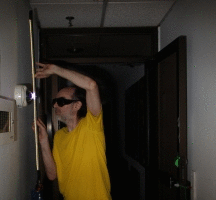
Gaming applications of this invention can be regarded as part of the Veillance Wand invention, or as a separate invention: VeillanceGames. The invention can also be used to compare veillance, e.g. to ensure equiveillance (e.g. approximately equal coverage by surveillance and sousveillance cameras) or to compare the relative coverage of human vision with the vision from a surveillance or sousveillance camera.
The Veillance Wand invention can be extended and deepened, if desired, by including Ryan Janzen, co-creator of the veillometer.
We also have collaborators at the
Centre for Biocomposites and Biomaterials Processing,
University of Toronto,
capable of making a Bio-Nano Holography
version of the Veillance Wand that works with the MannGlass
holographic video HUD (Head Up Display) for use in eyeglasses and
automobile windshields, etc:
(S. Mann is cross-appointed to the Faculty of Forestry, where
the CBBP is based.)


